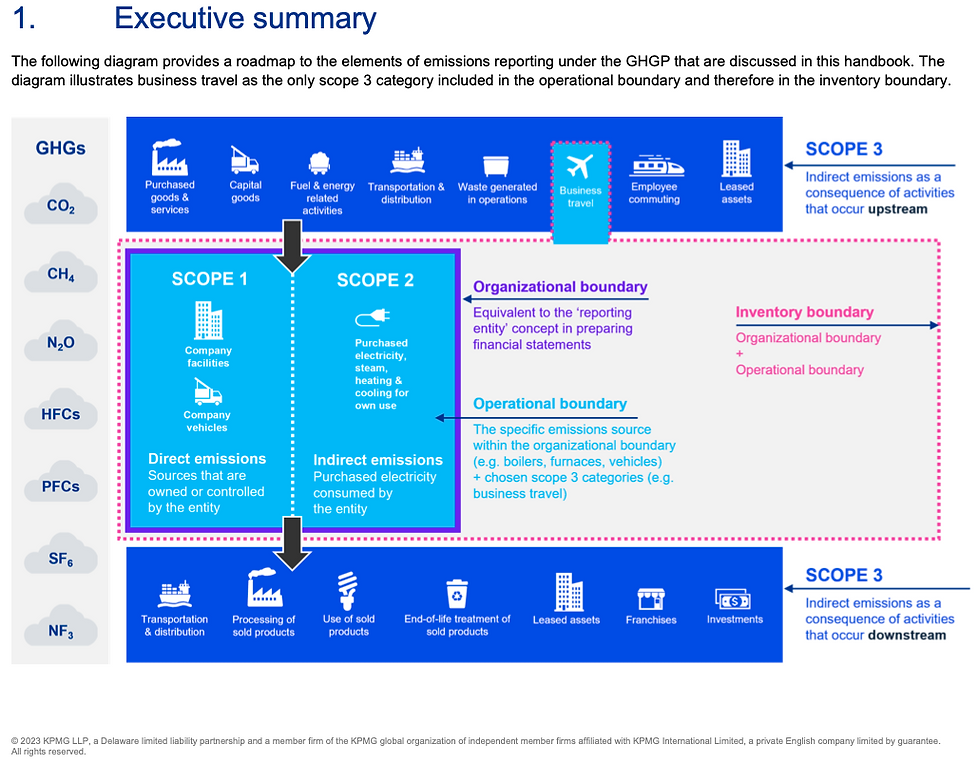How to calculate your GHG emissions? See contents of this handbook by KPMG
- Art Dam
- Jul 12, 2023
- 2 min read
Through the lens of the Greenhouse Gas Protocol (GHGP), KPMG US released a guide for finance professionals explaining all about GHG emissions. A 174 pages document structured as a Q&A, worth sharing with a larger audience.
Quoting the forefront: "The world of finance is expanding. Beyond numbers and into nature ... Finance professionals play a valuable role in bridging between scientific data and investor-quality information. And because of its influence on the future of emissions reporting, it is becoming more important ... to understand the Protocol and the fundamentals of greenhouse gas emissions reporting – GHG 101."
The Executive Summary indicates how to gather and use GHG emissions data: (1) Define the organizational boundary, (2) Classify sources of emissions, (3) Calculate emissions, (4) Track emissions and (5) Report emissions.
And througout the guide, answers to 100+ questions, a.o.:
What is a GHG inventory?
What is the formula for estimating GHG emissions?
What is a renewable energy attribute?
When are recalculations necessary?
How are scope 1, 2 and 3 emissions calculated? (30+ pages of the report relate to Scope 3 ...)
What is an offset credit? (2nd longest chapter of the guide)
On page 162 you have the full list of questions. Btw, an interesting way to use the guide, as each question is linked to the answer.
You can download the report by clicking at the image below. And here to visit KPMG US, ESG Reference Library.
About the GHGP, it started in 1998 as a partnership between the World Resources Institute (WRI) and the World Business Council for Sustainable Development (WBCSD). Overtime, multiple standards and guidance documents were released, turning GHGP the leading framework for measuring and reporting GHG emissions. Take note:
CO2 Carbon dioxide: combustion of fossil fuels, forest and other biomass burning, cement production
H4 Methane: agricultural processes, enteric fermentation in animals, decomposition of animal and of municipal solid waste, natural gas and petroleum, by-product of coal mining and incomplete fossil fuel combustion
N2O Nitrous Oxide: production of nitrogen-fixing crops and forages, use of synthetic and manure fertilizers, manure deposition by livestock, fossil fuel combustion, wastewater treatment and waste incineration, biomass burning
HFCs Hydrofluorocarbons: air conditioning, refrigeration, aerosol propellants, fire extinguishers and solvents
PFCs Perfluorocarbons: aluminum and semiconductor chip manufacturing
SF6 Sulphur Hexafluoride: leakage from electrical switchgear, magnesium casting and smelting processes, semiconductor manufacture
NF3 Nitrogen Trifluoride: manufacture of semiconductors, certain types of solar panels and chemical lasers





